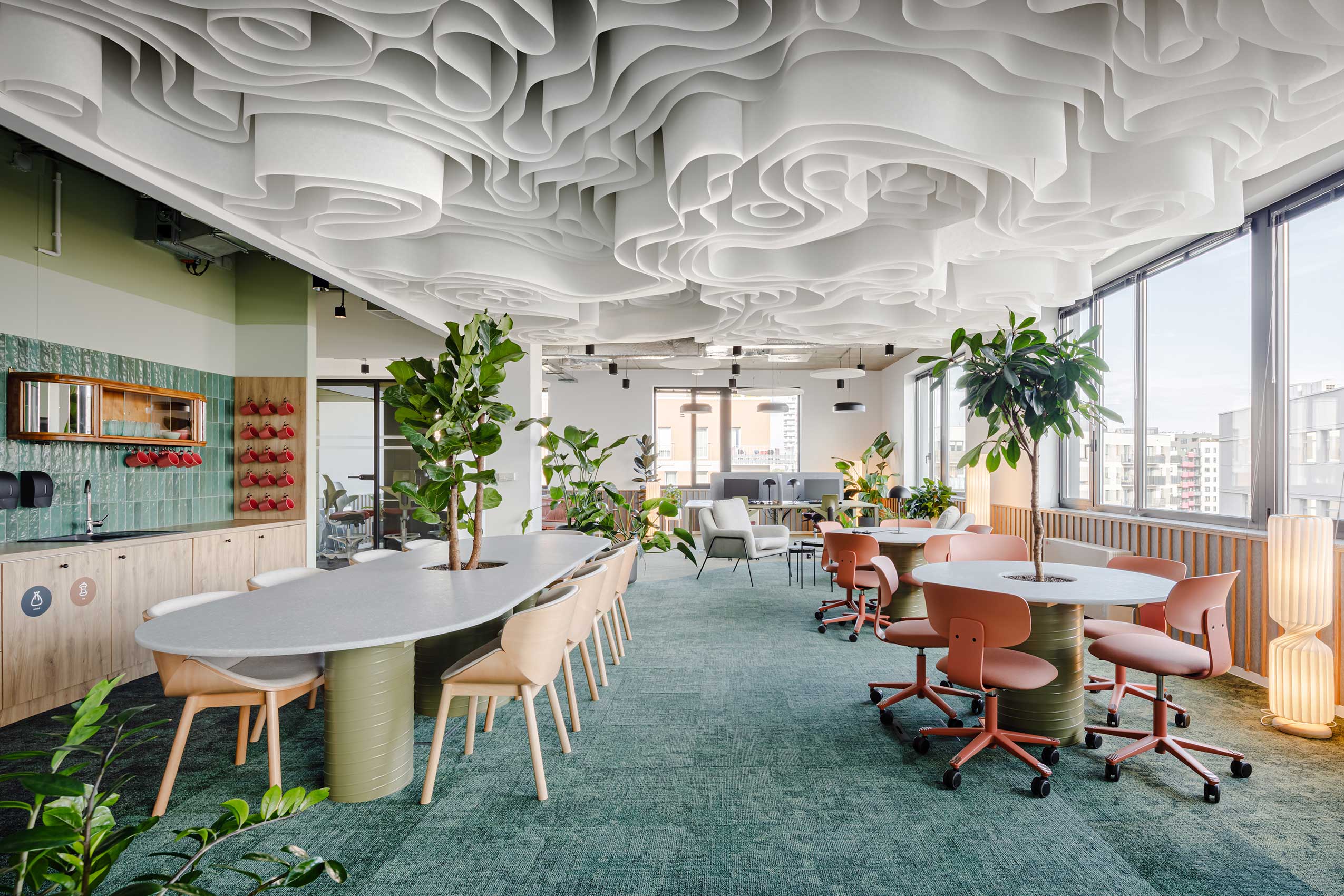To achieve this vision, they enlisted the expertise of interior architects Workplace, who conducted comprehensive analyses to understand the requirements of both employers and employees.
Flokk's contribution to the project was twofold: by providing environmentally conscious furniture designs, and second, by incorporating ergonomic solutions that promoted employee well-being and productivity. Workplace chose three of Flokk's designs – the HÅG Tion, HÅG Capisco Puls and Profim Fan – to feature prominently throughout the office.
Both HÅG chair designs were selected for their strong environmental profiles, being made from a high proportion of recycled materials and designed for longevity and easy repairability. These chairs are not only environmentally friendly but also highly flexible, allowing for multiple users with minimal adjustments. Their inclusion in meeting rooms and booths ensured comfort and adaptability during collaborative sessions and video conferences.
Moreover, the ergonomic features of the chairs, such as the balanced movement mechanism, promoted natural body movements, enhancing employee well-being and fostering open, dynamic conversations. By prioritizing ergonomic design, the workspace not only supports the physical health of employees but also facilitates creativity and collaboration.
Profim Fan was used in a large meeting room. With a timeless design, the chair seamlessly integrates into the office aesthetics, whilst it’s open shape encourages active participation in meetings, without hemming people in.
The design of the workspace itself is a reflection of the firm’s commitment to sustainability and flexibility. By incorporating elements of recycling, upcycling, and waste minimization, the interior architects were able to retain existing furniture and interior elements wherever possible, reducing the project's environmental footprint.
Additionally, the revamped office layout features 12 video conferencing booths and a central networking zone, providing employees with a variety of workspaces tailored to their needs. A reduction in desk sizes allowed for the integration of these additional spaces while fostering a sense of openness and collaboration.
By selecting environmentally conscious furniture designs and prioritizing ergonomic solutions, the company created a workspace that was both adaptable to changing needs and conducive to employee productivity and satisfaction.

/Fortum-project-poland-capisco-pls-tion-hag_resize_02.jpg)
/Fortum-project-poland-capisco-pls-tion-hag_resize_03.jpg)
/Fortum-project-poland-capisco-pls-tion-hag_resize_04.jpg)
/Fortum-project-poland-capisco-pls-tion-hag_resize_01.jpg)
/Fortum-project-poland-capisco-pls-tion-hag_resize_05.jpg)
/Fortum-project-poland-capisco-pls-tion-hag_resize_06.jpg)